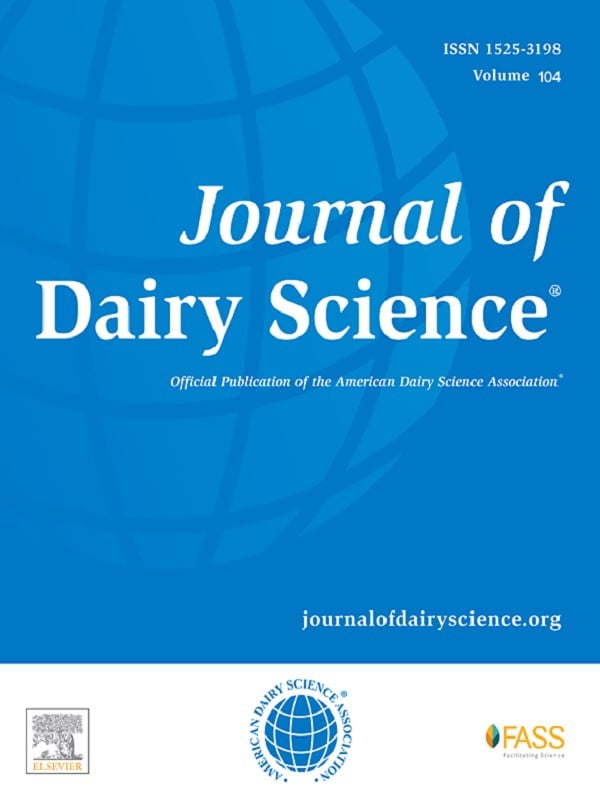Intravenous calcium infusion in a calving protocol disrupts calcium homeostasis compared with an oral calcium supplement
J. Dairy Sci. 102:6056–6064

Abstract
Hypocalcemia is a common postpartum condition in dairy cows, which negatively affects health and production. Intravenous Ca infusions are commonly included in calving protocols to prevent or mitigate the effect of hypocalcemia in multiparous cows. Thus, we sought to contrast the effect of intravenous Ca infusion against voluntary oral Ca intake on Ca metabolism. Serum total Ca (tCa) and whole-blood ionized Ca (iCa) were monitored in 24 multiparous Holstein cows after parturition. Precalving diets were formulated with a positive dietary cation-anion difference of 172 mEq/kg of DM and contained 4.1 g of Ca/kg of DM. At parturition, cows were blocked by calving sequence and calcemic status as either normocalcemic (cutoff threshold of iCa ≥1.10 mmol/L) or hypocalcemic (cutoff threshold of iCa <1.10 mmol/L). Cows in each block were randomly assigned to 1 of 2 treatments: either an oral source of Ca (Ca-Oral; n = 12) or an intravenous source of Ca (Ca-IV; n = 12). Cows in the Ca-Oral group were offered a 20-L commercial Ca suspension (48 g of Ca) for voluntary consumption. The supplement contained Ca carbonate, Ca formate, Ca propionate, and other minerals and vitamins (Farm-O-San Reviva, Trouw Nutrition, Amersfoort, the Netherlands). Cows in the Ca-IV group received a 450-mL intravenous Ca solution (13 g of Ca) that contained 298 mg/mL of Ca gluconate, 33 mg/mL of magnesium chloride, and 82 mg/mL of boric acid (AmosCAL, Kommer-Biopharm BV, Heiloo, the Netherlands). Both treatments were initiated within 25 ± 10 min after calving. The oral Ca suspension was offered to cows in a 25-L bucket and was available for 10 min. All cows in the Ca-Oral group voluntarily consumed the entire 20 L of the Ca suspension within 5 min. Blood samples for Ca analyses were collected at 0 (before treatment initiation), 1, 3, 10, and 18 h relative to treatment, and at 0700 and 1900 h for the next 2 consecutive days, to represent the 24-, 36-, 48-, and 60-h sampling time points. In Ca-IV cows, both iCa and tCa concentrations peaked at 1 h (1.54 mmol/L for iCa and 2.85 mmol/L for tCa) and declined to a nadir at 24 h following treatment initiation (0.94 mmol/L for iCa and 1.74 mmol/L for tCa). Although whole-blood iCa and serum tCa were higher at 1 and 3 h in Ca-IV cows, concentrations of iCa were greater for Ca-Oral cows at 18, 24, and 36 h and for tCa at 24 and 36 h. Our data indicate that intravenous Ca infusion immediately induced a state of hypercalcemia followed by lower whole-blood iCa and serum tCa concentrations 24 h later compared with oral Ca.